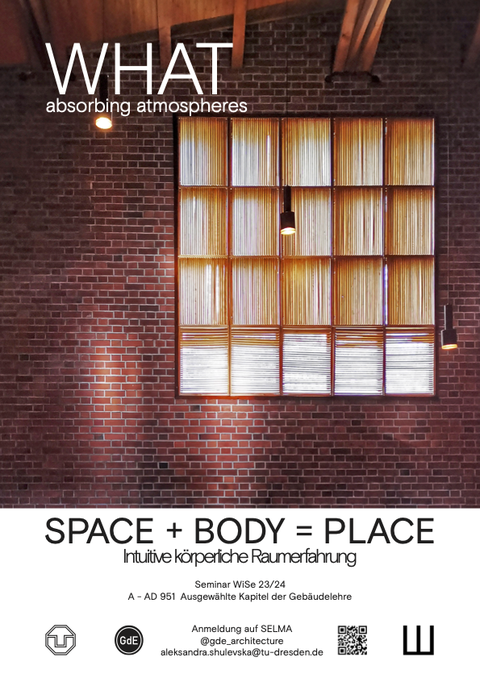Oct 04, 2023
SPACE + BODY = PLACE
Lessons from the Built Environment
Nowadays it could be argued that we are in the RE-era, i.e. the era of renovating, repurposing, reusing, recycling, refurbishing, resizing, remodelling, etc. Our physical world is a patchwork of elements and principles, and unlike time and history, its lifespan is anything but linear. Our built environment is an intricate collage of ever-changing spaces that we define and redefine through our interactions.
As architects build less and less new buildings and work more and more in the RE sector, our education needs to equip us accordingly, referring not only to formal education but also to our personal investigative approaches to self-development.
A shift in our approach towards studying and learning architecture in an archaeological way could be beneficial and even essential. Archaeology focuses primarily on the object itself. Its main protagonist is materiality. It examines the physical objects found on site to understand their relationship to us - humans and our behaviour. By observing their properties, archaeology seeks to place objects in time and thus in relation to other physical objects. Finally, after discovering the What and the How, archaeology asks the Why, that is, it looks for a broader context than just a time frame.
This principle of learning in reverse not only gives us an understanding of what is and what was, but also allows us to gather knowledge with which to project and anticipate change and evolution.
Intuition before Explanation
Let´s begin with a completely nonreferential approach to existing spaces firstly with our bodies and use space before analysing it. We are to intuitively experience atmospheres, created by a play of spatial parameters, before thinking about them.
This exercise make us the user before we become the designer. Right at the beginning, before we turn on our architectural minds, we are to flow through space and let it influence us. We are to let our bodies intuition take over and let some else’s spatial manipulations guide us.
Has our view been steered in a certain direction?
Has a surface invited us to take a seat?
Do we feel like quickly passing through or maybe like taking our shoes off and walking barefoot?
The intuitive experience of already built spaces is essential for the growth of the architect, because it teaches us the potential results of our work, without forgetting all the human senses, which are easily forgotten in today's world of visual dominance.
The general aim of these exercises is to understand spatial parameters as tools for creating atmospheres, which then, through the intuition of their users, provoke the creation of places.
Understanding spatial parameters, what they are in terms of properties and character, and how to manipulate them is the craft of the architect.
Furthermore, this exercise isn’t just for architects.
Architecture, both on the side of the user and the creator, is based on imagination. As architecture can often be too abstract to describe, architects often seek existing examples in the built environment to convey to clients what future spatial experiences they are investing in and help them imagine the outcome. But we learn very early on that in this dialogue spatial quality is hardly the argument it should be.
All humans have a very intimate relationship with space, so understanding our built environment should be part of our primary education. We learn basic principles in maths, biology, chemistry, etc. but our spatial perception is sadly not something everybody trains. Every potential inhabitant of architecture should developed some basis in analytical thinking towards space and its parameters, so that the dialogue about making spaces could be elevated and the importance of spatial quality wouldn’t be questioned.
This course is divided into two parts.
In the first half of the semester we will focus on implementing this approach to learning from the built environment and developing our intuition as architects and space makers. We will try to take off our architectural hats and approach architecture in reverse. First, we will visit places intuitively, simply as users, without analysing them, and try to absorb their atmosphere. Retrospectively, we will try to understand how our experience came about and what architectural tools were used to create the spaces we visited.
In the second part of the semester we will then try to reinvent the same approach to learning from the built environment as a basic education in spatial qualities for the non-architect.
The ultimate goal of this seminar is to take a step towards bridging the communication gap between architect and user.

